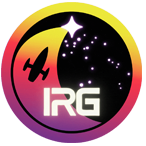Dispersed Matter Planet Project discoveries of ablating planets orbiting nearby bright stars
https://www.nature.com/articles/s41550-019-0973-y
An ablating 2.6 M⊕ planet in an eccentric binary from the Dispersed Matter Planet Project
https://www.nature.com/articles/s41550-019-0972-z
A compact multi-planet system around a bright nearby star from the Dispersed Matter Planet Project
https://www.nature.com/articles/s41550-019-0974-x
TOI 564 b and TOI 905 b: Grazing and Fully Transiting Hot Jupiters Discovered by TESS
https://arxiv.org/abs/1912.10186
A search for the origin of the interstellar comet 2I/Borisov
https://arxiv.org/abs/1912.10213
Gemini-GRACES high-quality spectra of Kepler evolved stars with transiting planets I. Detailed characterization of multi-planet systems Kepler-278 and Kepler-391
https://arxiv.org/abs/1912.10278
The Detectability and Constraints of Biosignature Gases in the Near & Mid-Infrared from Transit Transmission Spectroscopy
https://arxiv.org/abs/1912.10939
Orbital Stability of Circumstellar Planets in Binary Systems
https://arxiv.org/abs/1912.11019

